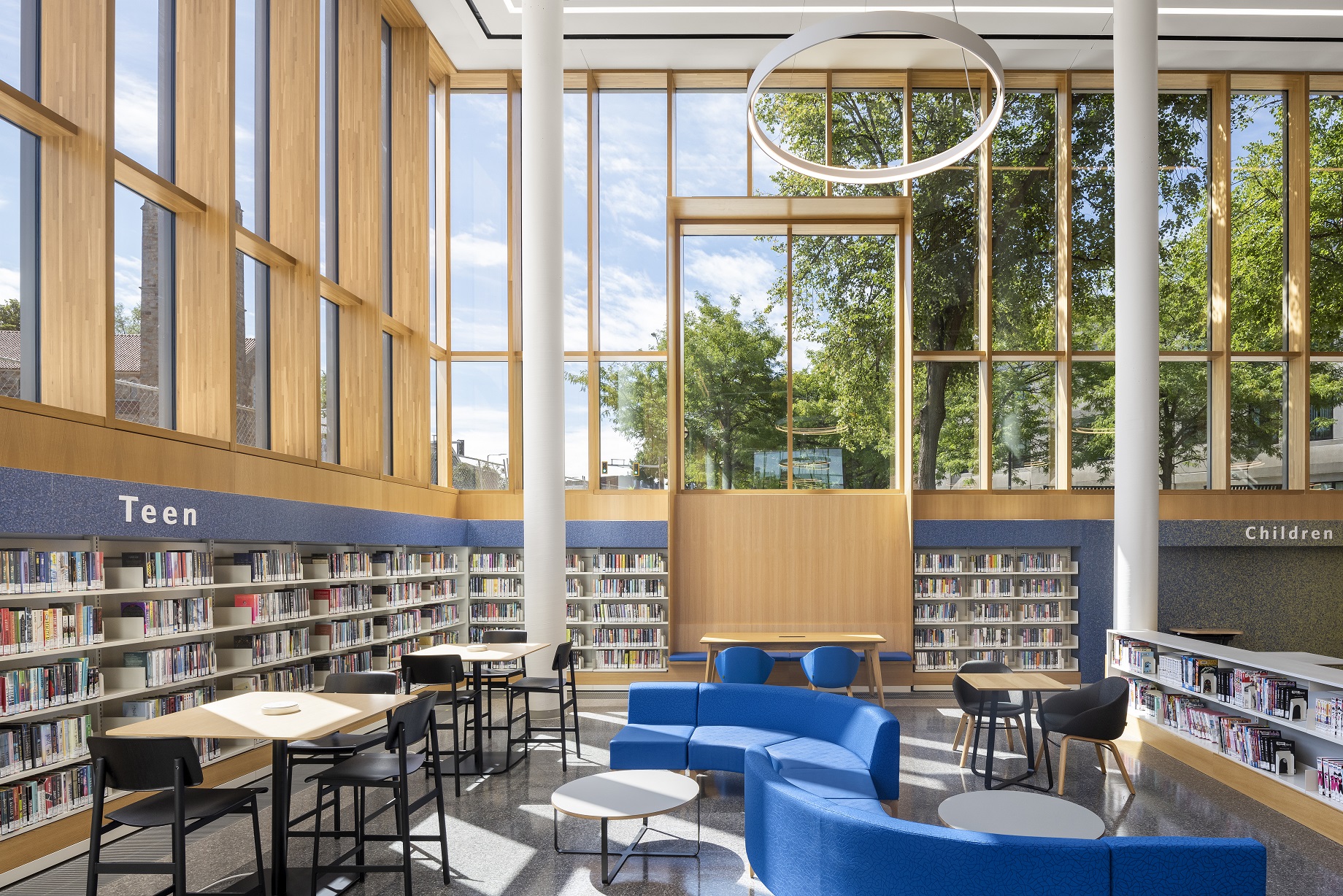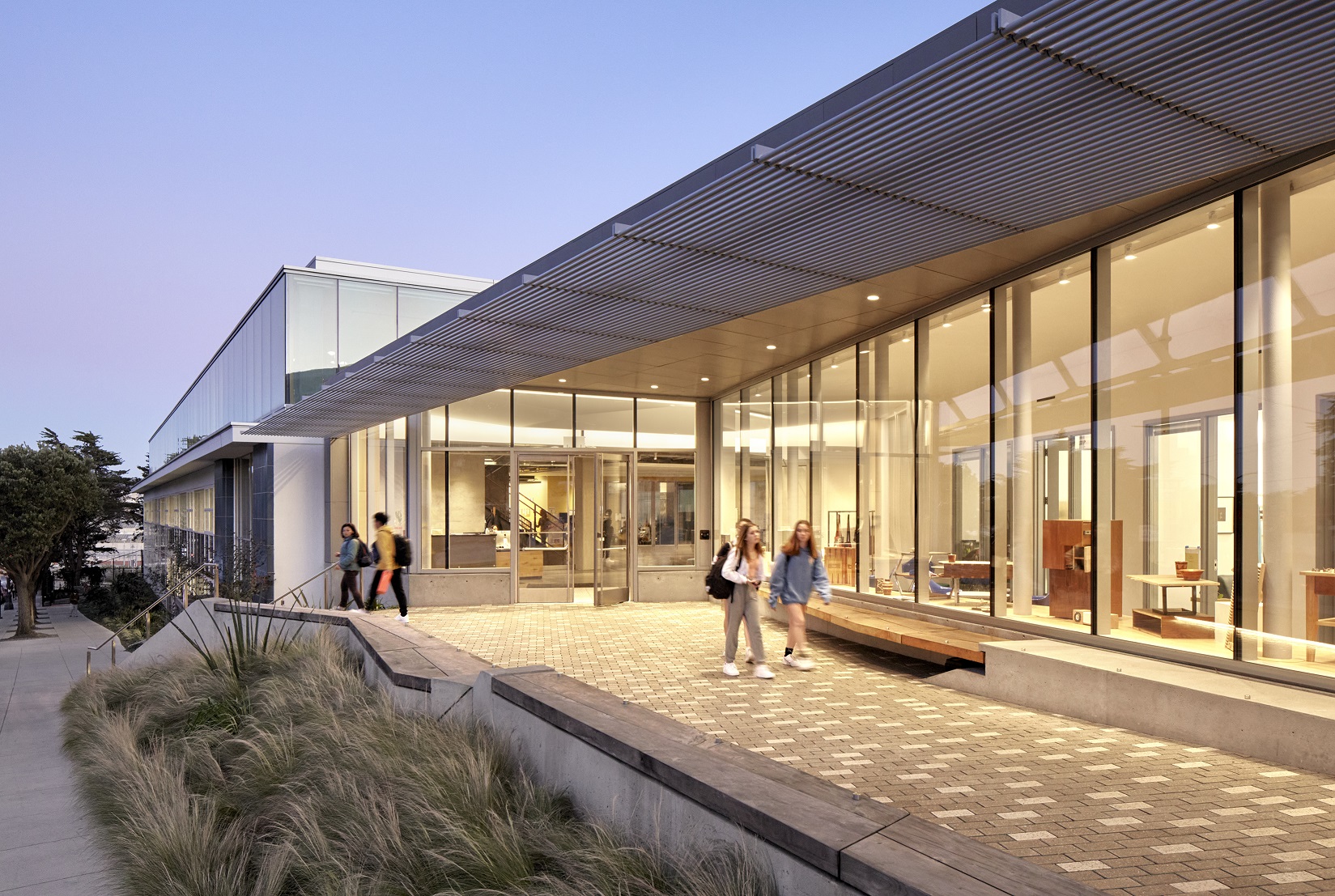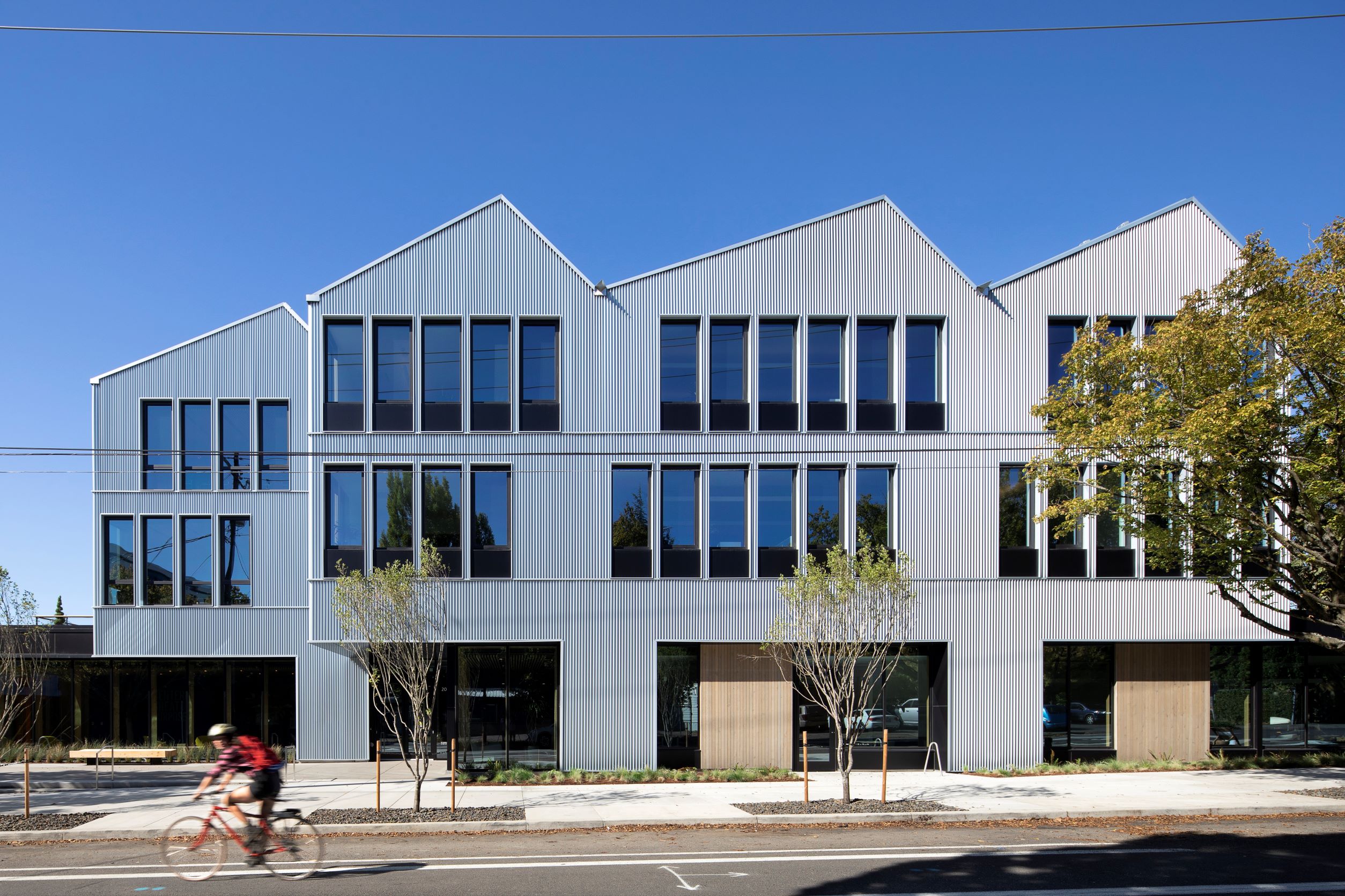Solarban® glass by Vitro Architectural Glass clads four 2022 top 10 green buildings
AIA Committee on the Environment (COTE) honors three renovated buildings with additions and one new build featuring high-performance solar control low-e glass by Vitro Architectural Glass
PITTSBURGH, PA – August 9, 2022 – Vitro Architectural Glass (formerly PPG Glass) is proud to announce that four of the 10 buildings selected by the American Institute of Architects (AIA) Committee on the Environment (COTE®) as the top green building projects of 2022 were glazed with Solarban® solar control, low-emissivity (low-e) glasses. The award-winning projects include:
- 633 S. Cooper Street; Memphis – Demonstrating the viability of converting existing building stock into a carbon-neutral building, 633 S. Cooper Street is an amazing adaptive reuse success. Challenged to upgrade a 1957 shell into a high-performing enclosure, Archimania carefully selected Solarban® 90 glass in a thermally broken storefront system for its high level of solar control performance and neutral aesthetics. In a one-inch insulating glass unit (IGU), Solarban® 90 glass delivers visible light transmittance (VLT) of 51% and a solar heat gain coefficient (SHGC) of 0.23. Even though the window-to-wall ratio is a mere 18%, the floorplate design manages to deliver daylight and views to 100% of the building’s work and collaboration spaces. In upcycling the mid-century building’s original steel structure, masonry and terrazzo floors, a 67% reduction in embodied carbon helped the project achieve net-zero energy, net-zero carbon performance.
-
Boston Public Library/Roxbury Branch; Roxbury, Mass. – In replacing the original 1978 translucent glass block with timber curtainwall and aluminum curtainwall systems outfitted with Solarban® 72 Starphire® glass, the Boston Public Library/Roxbury Branch has been reimagined as a vibrant community hub. To help deliver daylighting to all library patron areas and 91% of the regularly occupied areas, the size and spacing of the curtainwall’s mullions was analyzed and calibrated accordingly with daylight modeling. With the high performance Solarban® 72 Starphire® glass, the thermally broken white oak glulam curtainwall in the reading area delivers a whole assembly VLT of 68% and a SHGC of 0.28, while the aluminum curtain wall provides a VLT of 60% and a SHGC of 0.26. To optimize shading during operating hours, the architect Utile sized the depth of the east-facing curtain wall mullions accordingly while the south-facing mullions are assisted by surrounding trees to help modulate glare. “Filled with light, this renovation shows that existing buildings that are under loved can be transformed into a public space for a community who deserves it,” stated one of the AIA/COTE jurors.

Boston Public Library/Roxbury Branch; Photography by Anton Grassl Photography
-
Lick-Wilmerding High School; San Francisco – By preserving the existing mid-century curtainwall and adding Solarban® 70 glass to new additions, this industrial arts school is providing a sunny, thermally comfortable environment for its students. In fact, the project earned a 2020 Livable Building of the Year award from the Center for the Built Environment at the University of Berkeley and scored a 94% occupant survey satisfaction rate based on air quality, acoustic quality, lighting and thermal comfort. In a one-inch IGU, Solarban® 70 glass provides VLT of 64% and a SHGC of 0.27. Performance for the existing curtainwall was boosted with interior acrylic glazing. Complementing the existing curtainwall and its thin wood mullions, the new curtainwall addition on the third floor references the original modules with even thinner mullion-less silicone joints. Daylight modeling analysis of the new and existing spaces revealed that some circulation areas were not receiving enough daylight to function as collaborative spaces, so the architect EHDD added skylights and transom windows above the doors in the corridor.

Lick-Wilmerding High School; Photography by Michael David Rose Photography
-
Meyer Memorial Trust Headquarters; Portland – Textured metal cladding combines with operable Solarban® R67 (Formerly Solarban® R67) glass windows and ground-floor curtainwall to create an open and equitable environment at the state’s largest private foundation. With large exposures on the west, south and east elevations, Lever Architecture needed glass with a low SHGC for the building and therefore selected Solarban® 67 glass, which offers a 0.29 SHGC in a standard one-inch IGU. The curtainwall system attached to load-bearing mass plywood columns lends a beautiful aesthetic while the slender, yet tall punched windows create a simple rhythm below the saw-toothed 53kW photovoltaic (PV) roof.

Meyer Memorial Trust Headquarters; Photography by Jeremy Bittermann / JBSA
For more information about the full range of sustainable architectural glass products available from Vitro Architectural Glass, please visit www.vitroglazings.com or call 1-855-VTRO-GLS (887-6457). Information on satisfying LEED® and other green building objectives with Vitro Glass products is available at www.vitroglazings.com/leed.
Editor’s note: High-resolution photography is available upon request.
About Vitro Architectural Glass
Vitro Architectural Glass, part of Vitro, S.A.B. de C.V. (BMV: VITROA), is the largest glass producer in the Western Hemisphere, manufacturing a range of industry-leading, energy-efficient, high-performance products such as Solarban®, Sungate® and Starphire Ultra-Clear® glasses. Committed to continually raising the industry standard for sustainability, Vitro was the first U.S. glass manufacturer to have its entire collection of architectural glass products earn Cradle to Cradle Certified® status and the first North American manufacturer to publish third-party verified Environmental Product Declarations (EPDs) for flat glass and processed glass products. Additionally, all Vitro architectural glass products meet the Top 20% Low Embodied Carbon (LEC) material category based on standards set by the Inflation Reduction Act of 2022 and the U.S. General Services Administration (GSA). Vitro operates seven glass production facilities across North America, four residential glass fabrication plants in Canada and one of the world’s largest glass research and development facilities in Pittsburgh, Pennsylvania. For more information, please visit VitroGlazings.com.

Media Contact:
Robert J. Struble
Vitro Architectural Glass
412-820-8138
rstruble@vitro.com
www.vitroglazings.com
